#hedgerow crane's-bill
Explore tagged Tumblr posts
Text



05/11/2024-Song Thrush and view at Lakeside Country Park and Jackdaw out the front
Kestrel, Tufted Ducks, hedgerow crane's-bill, red valerian and old man's beard were also good to see at lunch time with Blackbird nice to see at home today.
#blackbird#song thrush#jackdaw#kestrel#hedgerow crane's-bill#photography#england#uk#world#nature#outdoors#walking#lakeside country park#hampshire#earth#lakeside#tufted duck#birdwatching
4 notes
·
View notes
Text

Hedgerow Crane's-bill
29 notes
·
View notes
Text
Smiling Irish Eyes
It’s St. Patrick’s Day, and Irish Eyes are smiling. St. Patrick’s Day is more than a day for green clothing, green beer, shamrocks, leprechauns, and pots of gold, although I wouldn’t mind having my own pot of gold right about now. This is a day to celebrate and learn about Irish culture, traditions, and history. By participating in the many celebrations and parades and enjoying the food, drinks, music, and dancing that define Irish culture, St. Patrick’s Day can be a day of fun and learning. As I kickoff the St. Patrick’s Day festivities, I thought it would be a good idea to share some of my favorite wildflowers that are native to Ireland.
All images and information in this post regarding Irish wildflowers are courtesy of http://www.wildflowersofireland.net/. Please visit the Wildflowers of Ireland website to learn more about Irish wildflowers.
Common Name: Bell Heather Scientific Name: Erica cinerea Irish Name: Fraoch Cloigíneach
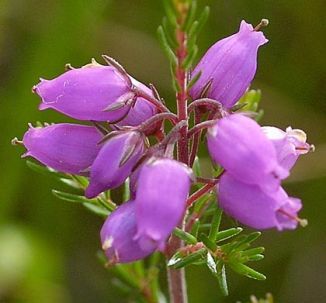
Common Name: Biting Stonecrop Scientific Name: Sedum acre Irish Name: Grafán na gcloch

Common Name: Blackthorn Scientific Name: Prunus Spinosa Irish Name: Draighean

Common Name: Bloody Crane's-bill Scientific Name: Geranium sanguineum Irish Name: Crobh dearg

Common Name: Bluebell Scientific Name: Hyacinthoides non-scripta Irish Name: Coinnle corra
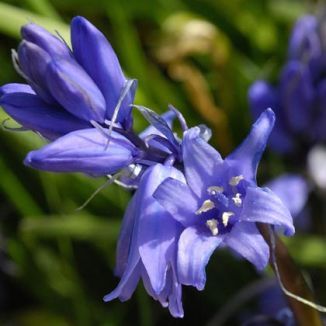
Common Name: Blue-eyed Grass Scientific Name: Sisyrinchium bermudiana Irish Name: Feilistrín gorm
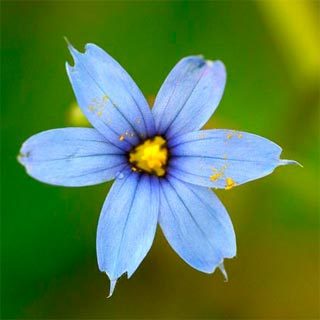
Common Name: Broad-leaved Everlasting-pea Scientific Name: Lathyrus latifolius Irish Name: Peasairín leathanduilleach
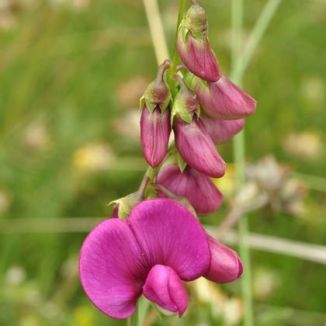
Common Name: Brooklime Scientific Name: Veronica beccabunga Irish Name: Lochall
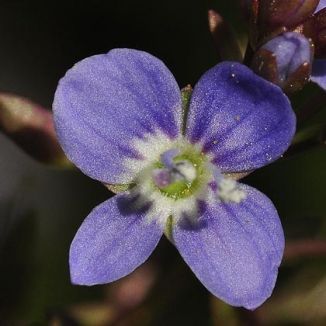
Common Name: Common Bird's-foot-trefoil Scientific Name: Lotus corniculatus Irish Name: Crobh éin
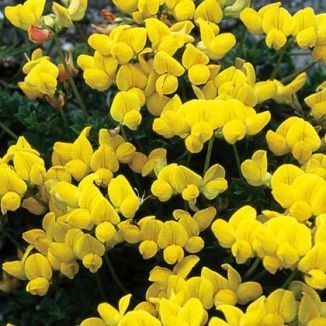
Common Name: Common Poppy Scientific Name: Papaver rhoeas Irish Name: Cailleach dhearg

Common Name: Common Toadflax Scientific Name: Linaria vulgaris Irish Name: Buaflíon

Common Name: Columbine Scientific Name: Aquilegia vulgaris Irish Name: Colaimbín
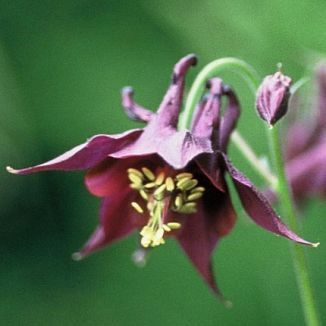
Common Name: Cowslip Scientific Name: Primula veris Irish Name: Bainne bó bleachtáin

Common Name: Dove's-foot Crane's-bill Scientific Name: Geranium molle Irish Name: Crobh bog

Common Name: Druce's Crane's-bill Scientific Name: Geranium x oxonianum Irish Name: Crobh gallda
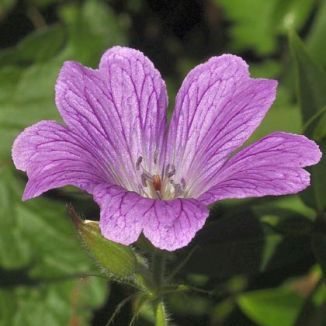
Common Name: Early Dog-violet Scientific Name: Viola reichenbachiana Irish Name: Sailchuach luath

Common Name: Early Marsh-orchid, ssp.coccinea Scientific Name: Dactylorhiza incarnata subsp. coccinea Irish Name: Magairlín dearg

Common Name: Eastern Gladiolus Scientific Name: Gladiolus communis Irish Name: Glaidiólas oirthearach

Common Name: Eyebright Scientific Name: Euphrasia officinalis Irish Name: Glanrosc
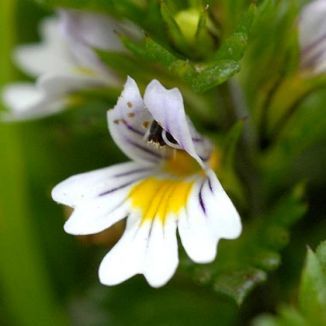
Common Name: Flecked Marsh-orchid Scientific Name: Dactylorhiza incarnata ssp. cruenta Irish Name: Magairlín craorag

Common Name: Flowering Currant Scientific Name: Ribes sanguineum Irish Name: Cuirín
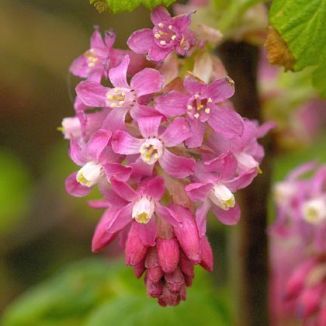
Common Name: Foxglove Scientific Name: Digitalis purpurea Irish Name: Lus mór

Common Name: Fragrant Orchid Scientific Name: Gymnadenia conopsea Irish Name: Lus taghla

Common Name: Goldilocks Buttercup Scientific Name: Ranunculus auricomus Irish Name: Gruaig Mhuire
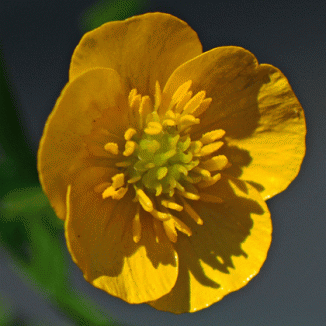
Common Name: Gorse Scientific Name: Ulex europaeus Irish Name: Aiteann gallda
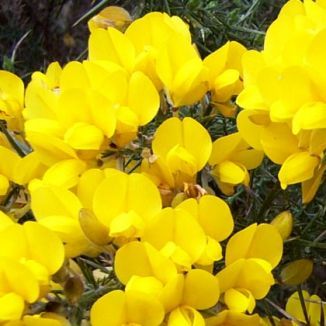
Common Name: Green Alkanet Scientific Name: Pentaglottis sempervirens Irish Name: Boglas spáineach
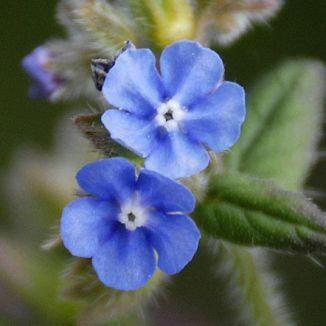
Common Name: Green-winged Orchid Scientific Name: Anacamptis morio Irish Name: Magairlín féitheach
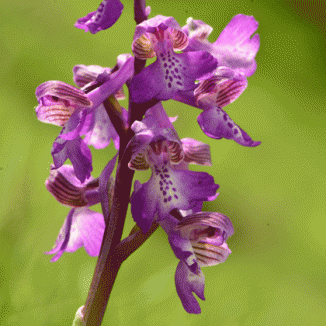
Common Name: Heath Fragrant Orchid Scientific Name: Gymnadenia borealis Irish Name: Lus taghla na móna
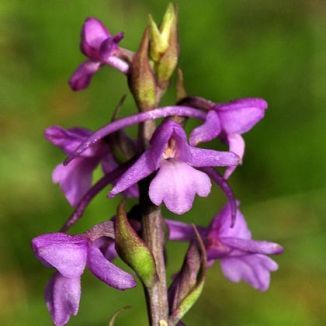
Common Name: Heath Spotted-orchid Scientific Name: Dactylorhiza maculata Irish Name: Na circíní
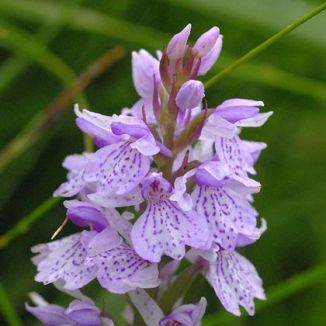
Common Name: Heather Scientific Name: Calluna vulgaris Irish Name: Fraoch mór
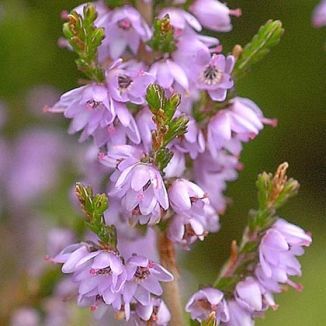
Common Name: Hebridean Spotted-orchid Scientific Name: Dactylorhiza fuchsii ssp. hebridensis Irish Name: Unknown at present
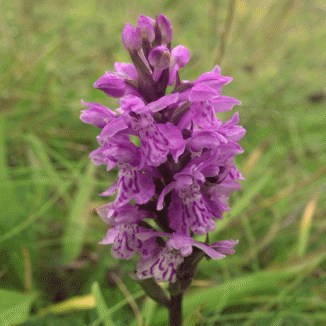
Common Name: Hedgerow Crane's-bill Scientific Name: Geranium pyrenaicum Irish Name: Crobh na bhfál
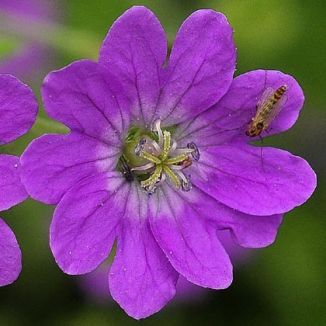
Common Name: Honesty Scientific Name: Lunaria annua Irish Name: Lus na gealaí
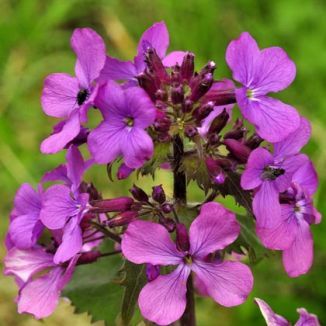
Common Name: Hop Trefoil Scientific Name: Trifolium campestre Irish Name: Seamair dhuimhche

Common Name: Indian Balsam Scientific Name: Impatiens glandulifera Irish Name: Lus na pléisce
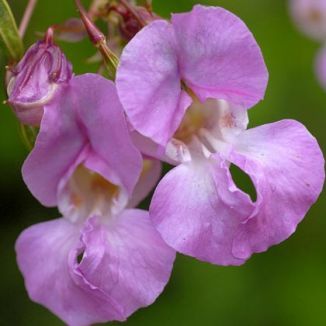
Common Name: Irish Eyebright Scientific Name: Euphrasia salisburgensis Irish Name: Glanrosc gaelach

Common Name: Irish Marsh-orchid Scientific Name: Dactylorhiza Kerryensis Irish Name: Magairlin gaelach
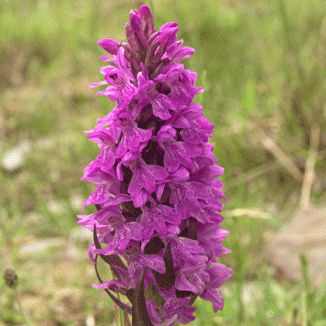
Common Name: Large-flowered Butterwort Scientific Name: Pinguicula grandiflora Irish Name: Leith uisce
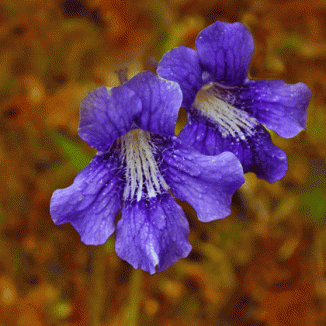
Common Name: Lesser Centaury Scientific Name: Centaurium pulchellum Irish Name: Dréimire beag

Common Name: Mallow Common Scientific Name: Malva sylvestris Irish Name: Lus na meall Muire
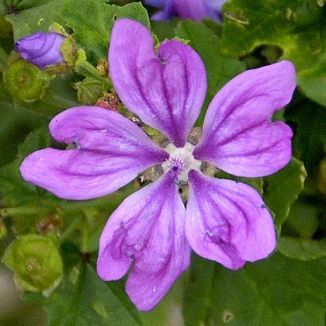
Common Name: Marsh-marigold Scientific Name: Caltha palustris Irish Name: Lus buí Bealtaine
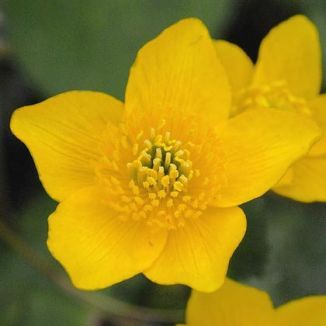
Common Name: Meadow-foam Scientific Name: Limnanthes douglasii Irish Name: Cúr léana

Common Name: Meadow Saffron Scientific Name: Colchicum autumnale Irish Name: Cróch an fhómhair
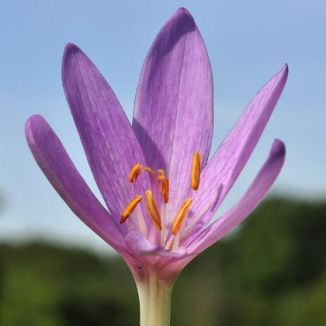
Common Name: Monkeyflower Scientific Name: Erythranthe guttata Irish Name: Buí an bhogaigh
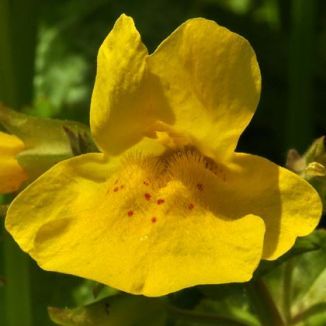
Common Name: Narrow-leaved Helleborine Scientific Name: Cephalanthera longifolia Irish Name: Cuaichín caol
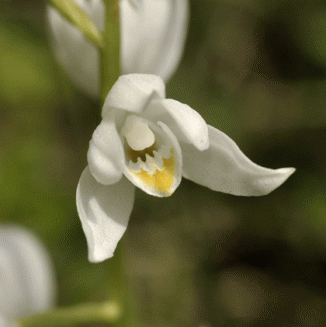
Common Name: Nettle-leaved Bellflower Scientific Name: Campanula trachelium Irish Name: Scornlus
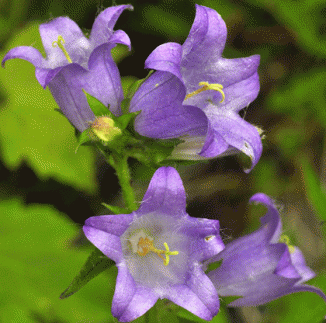
Common Name: Northern marsh-orchid Scientific Name: Dactylorhiza purpurella Irish Name: Magairlín corcra

Common Name: O'Kelly's Spotted-orchid Scientific Name: Dactylorhiza fuchsii var. okellyi Irish Name: Nuacht bhallach Uí Ceallaigh

Common Name: Pencilled Crane's-bill Scientific Name: Geranium versicolor Irish Name: Crobh stríocach

Common Name: Pink-sorrel Scientific Name: Oxalis articulata Irish Name: Seamsóg ghlúineach
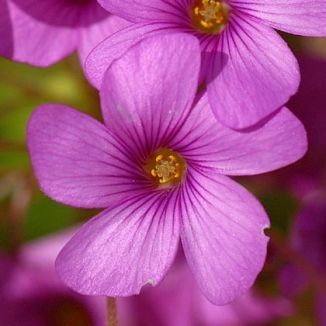
Common Name: Primrose Scientific Name: Primula vulgaris Irish Name: Sabhaircín

Common Name: Pyramidal Orchid Scientific Name: Anacamptis pyramidalis Irish Name: Magairlín na stuaice

Common Name: Rape Scientific Name: Brassica napus Irish Name: Ráib

Common Name: Red Valerian Scientific Name: Centranthus ruber Irish Name: Slán Iomaire

Common Name: Rhododendron Scientific Name: Rhododendron ponticum Irish Name: Róslabhras
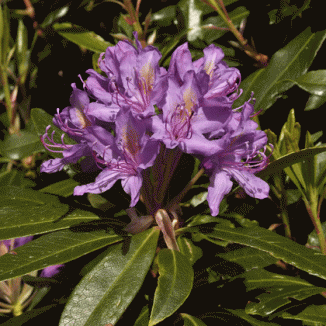
Common Name: Rock Sea-spurrey Scientific Name: Spergularia rupicola Irish Name: Cabróis na gcloch

Common Name: Sand Pansy Scientific Name: Viola tricolor ssp. curtisii Irish Name: Goirmín duimhche
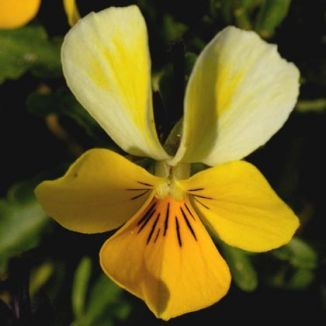
Common Name: Scarlet Pimpernel Scientific Name: Anagallis arvensis Irish Name: Falcaire fiáin

Common Name: Snapdragon Scientific Name: Antirrhinum majus Irish Name: Srubh lao

Common Name: Soapwort Scientific Name: Saponaria officinalis Irish Name: Garbhán creagach
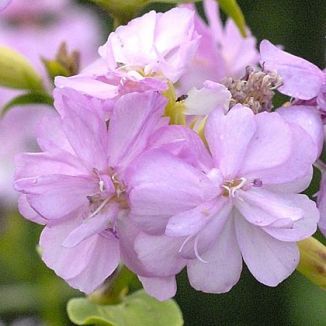
Common Name: Thrift Scientific Name: Armeria maritima Irish Name: Rabhán
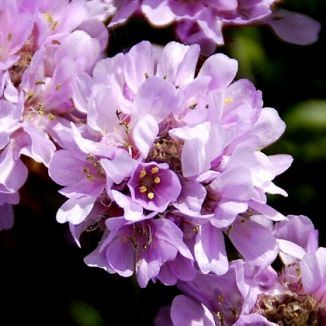
Common Name: Trailing Tormentil Scientific Name: Potentilla anglica Irish Name: Néalfartach shraoilleach
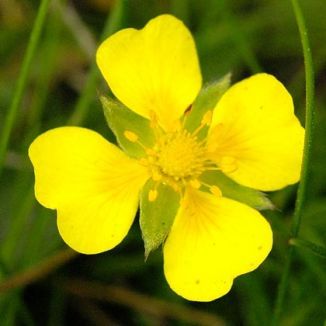
Common Name: Tufted Vetch Scientific Name: Vicia cracca Irish Name: Peasair na luch
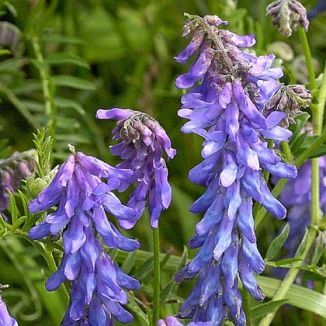
Common Name: Welsh Poppy Scientific Name: Papaver cambricum Irish Name: Poipín Breatnach

Common Name: White Water-lily Scientific Name: Nymphaea alba Irish Name: Bacán bán
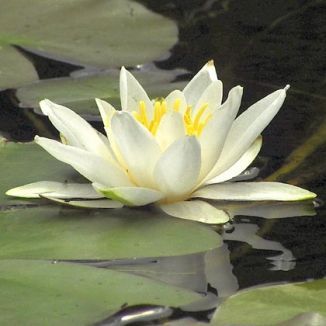
Common Name: Yellow Iris Scientific Name: Iris pseudacorus Irish Name: Feileastram

All images and information in this post regarding Irish wildflowers are courtesy of http://www.wildflowersofireland.net/. Please visit the Wildflowers of Ireland website to learn more about Irish wildflowers.
Sharissa Hall
The Flori Godmother
“May flowers always line your path and sunshine light your day. May song birds serenade you every step along of the way. May a rainbow run beside you in a sky that’s always blue. And may happiness fill your heart each day your whole life through.”
~ Irish Blessing
Post date Mar 17th, 2020 5:54:27pm
1 note
·
View note
Text
Sooo, George and the Ramblings team had spent a harrowing time in the Golden Lion working out the route and other logistics over the course of an hour one Friday evening whilst imbibing copious quantities of gold liquid.
So here I am hitting a ciabatta bread bun with corned beef and pickled beetroot and really taking a gourmet approach to sandwich building by complementing it with some Walkers plain crisps and a banana. It’s only 6 miles-ish if we get it right so it should be about 7 miles working on past experience where something tends to go wrong.
Carol is promising us a great day weather-wise and the blue sky and occasional rogue cumulus that we have now is expected to remain for the rest of the day. That’ll do nicely thank you very much Ms. Kirkwood, we’re on a roll. Peter, our resident rally driver and, on this occasion taxi to Leeming, is knocking on the door. Always punctual, I do like that, we’re off to pick up the others with lots of time to spare.
We have had to make a few last minute changes as the original intention was to go from Northallerton West but this has to be changed because of the destructive burrowing of some pesky wabbits just this side of Scruton which results in the necessity for Wensleydale Railway (WR) to abandon that service for the day whilst repairs are made. We’ll be going from Leeming.
We arrive at Leeming Station and head towards the carriage that doubles as shop and ticket office to be greeted by a wonderfully helpful lady who issues us with tickets discounted if you’re local and also, ahem, if you’re old!
She explains that it’s sometime embarrassing to ask people if they qualify for senior discounts and we put her at her ease when we all agree that we’re happy to be any age that’s going to attract a 25% discount. With a combined age of nearing 400 between the six us we’re well inside the rules.
We have about 20 minutes to wait and the train arrives early so we’re asked if we fancy a trip down to Scruton and back at no extra charge so here we are on the train! This is a lovely bonus and we’re transported down the track through some beautiful, mid-summer meadows to a point just before the damage perpetrated by our furry, long eared, friends. The driver changes ends and then takes us back somewhat slower and we see the size of the developments taking place to bridge the line with the new by-pass. There’s certainly a huge amount of work going on.
We stop at Leeming again and then at Bedale. The train now has a chance to speed up to a point that reminds me of a poem that had been put to a short film then narrated by, I think, Sir John Betjeman. See the link at the end of the article.
Night Mail – WH Auden
This is the Night Mail crossing the border, Bringing the cheque and the postal order, Letters for the rich, letters for the poor, The shop at the corner and the girl next door. Pulling up Beattock, a steady climb: The gradient’s against her, but she’s on time. Past cotton-grass and moorland boulder Shovelling white steam over her shoulder, Snorting noisily as she passes Silent miles of wind-bent grasses.
Birds turn their heads as she approaches, Stare from the bushes at her blank-faced coaches. Sheep-dogs cannot turn her course; They slumber on with paws across. In the farm she passes no one wakes, But a jug in the bedroom gently shakes.
Dawn freshens, the climb is done. Down towards Glasgow she descends Towards the steam tugs yelping down the glade of cranes, Towards the fields of apparatus, the furnaces Set on the dark plain like gigantic chessmen. All Scotland waits for her: In the dark glens, beside the pale-green sea lochs Men long for news.
Letters of thanks, letters from banks, Letters of joy from the girl and the boy, Receipted bills and invitations To inspect new stock or visit relations, And applications for situations And timid lovers’ declarations And gossip, gossip from all the nations, News circumstantial, news financial, Letters with holiday snaps to enlarge in, Letters with faces scrawled in the margin, Letters from uncles, cousins, and aunts, Letters to Scotland from the South of France, Letters of condolence to Highlands and Lowlands Notes from overseas to Hebrides Written on paper of every hue, The pink, the violet, the white and the blue, The chatty, the catty, the boring, adoring, The cold and official and the heart’s outpouring, Clever, stupid, short and long, The typed and the printed and the spelt all wrong.
Thousands are still asleep Dreaming of terrifying monsters, Or of friendly tea beside the band at Cranston’s or Crawford’s: Asleep in working Glasgow, asleep in well-set Edinburgh, Asleep in granite Aberdeen, They continue their dreams, And shall wake soon and long for letters, And none will hear the postman’s knock Without a quickening of the heart, For who can bear to feel himself forgotten?
The train is elderly but the seats are more comfortable than the modern equivalent and there is far more room. The doors are opened from the outside and you have to open the windows to reach out to turn the handle; this was the highly effective health and safety measure that ensured children and the vulnerable couldn’t open the door by accident.
We position ourselves in seats that face each other. There are 6 seats across the carriage in a 4 and 2 formation and we’re able to engage in conversation whilst taking in the fabulous views that present themselves as the train snakes through the countryside.
If you click any of the pictures here you can page through them full size and it’s definitely worth it…
The Wensleydale Railway staff inspect our tickets with a smile and we all remark how the atmosphere is reminiscent of childhood with the humour and banter. The weather is endless blue sky and this, in itself, is a carefree childhood memory when every day was sunny; however, today it is gift wrapped, vivid and happening now.
We’re invited to buy coffee, tea and biscuits at very reasonable prices and I take the opportunity then gaze open mouthed through the open window with the warm breeze gently wafting the smell of partially harvested fields that are so yellow in the sunshine they make me squint. There are rolled bales of straw scattered randomly across the fields with black shadows that indicate the intensity of the sun. There are large birds using the thermals to glide above without a single beat of their wing, they’re suspended in the atmosphere and the scene is almost surreal. George thinks they’re some kind of buzzard but he’s not sure, maybe some ornithological friends could confirm.
In the blink of an eye I’m looking down a cut with a fast flowing stream with reeds on both banks that pick out its path as it meanders across the field and eventually merges with the hedges in the distance.
Wensleydale is beautiful in its smooth rolling glory whereas other dales are beautiful for being craggy and rough. All of the dales are dramatic and change according to the season. It’s never the wrong time to go to the dales and the Wensleydale Railway make it easy and safe even if the weather is poor. I hope they achieve their aspirations of extending through to Settle or even just further into the dale. This track is fabulous.
We arrive in Leyburn and half the passengers alight before we hear a confident blast on the conductor’s whistle as the doors are slammed shut and we coast our way on the final leg to Redmire.
Redmire station is minimal but functional and this is our start point to walk back to Leyburn via Redmire Scar and Leyburn Shawl.
We take a few pictures and I start the app on my phone to help us follow the planned route and also to track us wherever we walk.
The first two kilometres are up. By this I mean they are both chronically and acutely up! Initially we’re on the road but it’s quiet with the exception of the mailman and the odd 4×4. It’s hot and I’m glad I’ve been liberal with the suncream, SPF 40 all day stuff from Tesco’s and only a fiver, well worth it. We stay on the road for about a kilometre then turn right onto a track that has signs indicating dire consequences for anyone who dares to trespass on the quarry side of a pig wire fence. If you chose to follow this route there are many ambiguous signs, one or two that indicate alternative routes, at least one that states no access although the OS Map quite clearly states otherwise and a particularly ambiguous one that gets one of us into trouble.
We enter a field via a five bar gate that is locked shut and make our way on some more ‘up’. The track peters out but there is a style in the distance and we head for that. Over the style and on to an embankment followed by some more ‘up’. The going is soft which is nice on the feet but pulls on the back of the legs. On reaching the top of Redmire Scar we stop to take in the scene. We can see at least a third of Wensleydale from here and it’s breathtaking. If someone had played the theme from Postman Pat I could imagine the little van scuttling about the winding roads between dry stone walls and buttercup spotted meadows.
The hard part is now complete and the middle stretch is easy going and to the right is wonderful on the eye. To the left it’s more ‘interesting’ in as much as we have old worked out quarries that have flooded areas, rough plants that thrive in the challenging environment and huge numbers of yellow tansy lifting otherwise stark and often dark areas of waste.
A little further along and we can both see and hear a working quarry and decide to have lunch before we get closer to avoid the dust and noise.
Eating our sandwiches whilst perched on the edge of Redmire Scar gazing out over the quilt of fields with lanes, dry stone walls, hedgerows, trees, Penhill and all of this is topped by the bluest of blue skies with fluffy cumulus drifting very slowly and casting shadows that constantly morph into different shapes as they caress the undulating fields; this is bliss.
After 20 minutes we strike our little camp and continue the walk adjacent to the active quarry and try to get that behind us as quickly as possible.
There is a minor descent and we cross the road on to Preston Scar and after some easy terrain that’s well signposted we arrive at a point that is poorly marked and ambiguous resulting in an interesting situation with a farmer.
We do try to act responsibly as we ramble about, closing gates, only going on tracks that are clearly marked on the OS Maps and wherever possible, sticking to routes that are obviously marked; however, at this point there are so many arrows indicating the path(s) to take and after taking the group through a patch of vicious stinging nettles, baring in mind that some of them were wearing shorts, and meeting with a dead end and consequently having to retrace our steps, we find the official route but even that is ambiguous.
So, five of us go down the route that is marked on our side of the fence and one takes the route marked on the other side of the fence which takes him into a field. A few minutes later and we have the Wensleydale version of the Cuban Missile crisis.
A lady farmer has just finished repairing her fence and the sight of Peter on what she maintains is the wrong side of the fence sends her into a bit of state. I’ll not go into detail here but Peter, without hesitation, retraces his steps back up to the point of ambiguity and Mac shouts an apology. This is not enough for our vociferous land owner and things become orally combative culminating with an eloquent invitation for us to piss off. If you chose to walk this route please be careful at this point as both tracks are clearly signed but the one in the field gets you a bollocking.
We’re together again and on a path that is clearly marked on both the OS Map and by footfall and head into Preston under Scar where the app on my phone is challenged by some beta software and locks up. Now I do have back up maps on it and George has duplicates on his so we’re not quite blind but it does mean there is no tracking of exactly where we are which is less comfortable usual.
We leave Preston on the Wensley road for about 500 metres and turn left onto a track clearly marked and bump into Julie and Stuart who are walking to Leyburn too. They have a paper map and we develop a degree of map envy and try to work together to discover the route through the woods which takes a few minutes as the obvious one has now been walled up and the actual one is not obvious.
To our relief the track through the woods is clearly marked and the bonus is that there is a bridge for photographs.
As we exit the woods Julie and Stuart are looking at the map and a way marker which are advising different routes. They opt for the map and we follow them through two fields and diagonally across another on the rise again.
At the top we’re at the start of Leyburn Shawl and the going gets easy on a well maintained path with trees to our right that break occasionally to frame some fabulous views of the dale.
It’s about three kilometres to Leyburn and there is a gentle fall that makes it a leisurely stroll into the Market Place.
Peter and Hayden decide on a couple of beers and we retire to the Serendipity Cafe above the shop. It’s Mac’s suggestion and truly worth a visit. We’re served by a delightful young lady who’s both cheerful and accommodating when I ask for some cheese to go with my scone. There are places that can’t deal with requests that are not on the menu but not here, it’s an “If we’ve got it you can have it attitude” and I’ll certainly be back. Highly recommended.
The next hour is filled with drinks, ice cream and chat before walking to the station. Give yourself 10 minutes to walk to the station from the town centre.
The journey back to Leeming is as delightful as the one to Redmire as we take the front coach to see more of both sides of the track.
This is a great day out. Wensleydale Railways is efficient and comfortable. The scenery from the train is stunning.
The walk is about 7 miles and the hard bit is at the beginning. There are a number of ambiguous signs so ensure you have an up-to-date map. Wensleydale is very beautiful and from the top of the Scars you can see an awful lot of it. Stick to the track to the left of the fence when descending to Preston Under Scar.
Feel free to share and ‘like’. Enjoy…G. x
Here’s a lovely link to a BBC programme narrated by Sir John Betjeman: http://www.bbc.co.uk/iplayer/episode/b03495yn/lets-imagine-a-branch-line-railway-with-john-betjeman
The stories, text and photographs are Copyright and written permission must be obtained for all commercial use.
Sooo, George and the Ramblings team had spent a harrowing time in the Golden Lion working out the route and other logistics over the course of an hour one Friday evening whilst imbibing copious quantities of gold liquid.
#Landscapes#Leyburn#Night Mail#Northallerton#Photographs#Photos#Pictures#Railway Poem#Railways#Redmire#Walking#Walks#Wensleydale Railway#Wenslydale#WH Auden#Yorkshire#Yorkshire Moors
0 notes
Text










10/10/2023-Lakeside and home
Photos taken in this set are of: 1. View out the back with some nice yellow leaves coming. 2 and 3. A gorgeous Red Admiral I was thrilled to see on the exuberant and shining buddleia still in flower nicely out the front. A powerful moment watching this supreme butterfly, seeing a few at Lakeside too this star of the year is out in numbers again. 4. Some lovely ox tongue enjoyed again today a key flower this week so far. 5. A view at Lakeside, making the most of a bit of meadow still long taking me back to serene summer days, with mowing going on. 6. Bright red rose hips. 7. Beautiful creeping thistle by the lake still looking great. 8. An august Carrion Crow, one of two I got top close views of basking in the glorious autumnal sunlight, it picked at the ground and had a beak full of bird seed at one point. 9. Beautiful oxeye daisy beside the steam railway track. 10. A Collared Dove, frequent in the garden today.
Some avian excitement came late on in my lunch time walk with a close view of a Cormorant overhead walking along the northern path, and a rousing distant view of a circling Buzzard which was nice after hearing one there yesterday. Great views of Jackdaw including a fluffy slightly white one, Magpie, Robin again, young Herring Gull, Mallard, Moorhen and Great Crested Grebes stood out too with Long-tailed Tit heard, with Starlings and Blue Tit heard enjoyed at home. Speckled Wood, I believe a Brimstone seen quickly, fine views of Migrant Hawker and joined post-mating Common Darter and a hoverfly on the ox tongue were nice insect moments at Lakeside. Other key plants seen were hedge bindweed, sweet little hedgerow crane's-bill a nice one for this time of year, broad-leaved clover, yarrow, dock, hawthorn berries and apples. Alongside ox tongue carrot seed heads looked nice in the precious meadow scene. Long-bodied Cellar spider was good to see at home today too. Another rich autumnal day.
#birdwatching#photography#red admiral#red admirals#butterflies#insects#migrant hawker#common darter#hedgerow crane's-bill#buzzard#cormorant#hoverfly#starlings#collared dove#sunny#outdoors#carrion crow#world#lakeside#lakeside country park#uk#england#hampshire#earth#nature#happy#october#autumn#2023#europe
4 notes
·
View notes
Text




11/04/2024-William the Peregrine at Winchester Cathedral, buttercups with a hoverfly on, sky at home and view including a stunning hoard of bluebells in Winchester. Great Tit, Jackdaw, Blackbird, mercury, cow parsley, comfrey, silverweed cinquefoil leaves and snail at Winnall Moors, hedgerow crane's-bill and Wren heard were other highlights today.
#birdwatching#photography#hampshire#winchester cathedral#peregrine falcon#winnall moors#buttercup#cow parsley#hedgerow crane's-bill#winchester#walking#outdoors#thursday#2024#home#sky
0 notes
Text
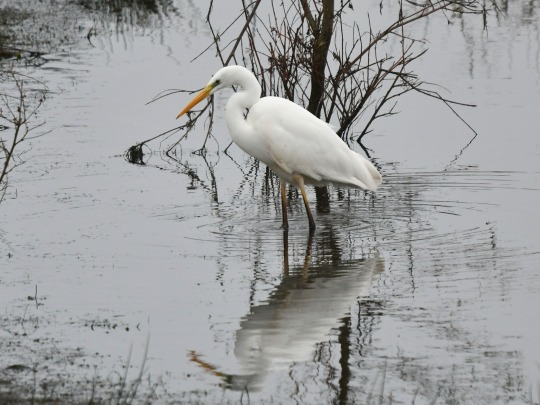

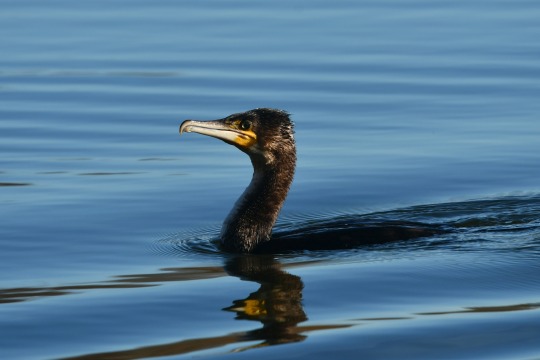

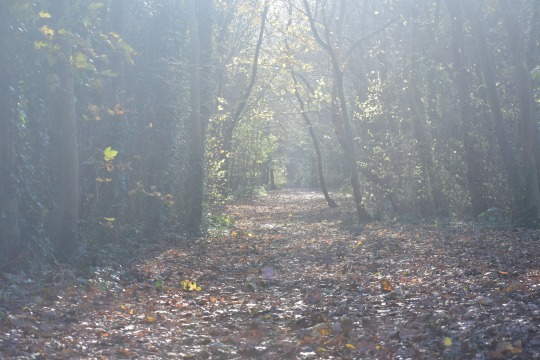

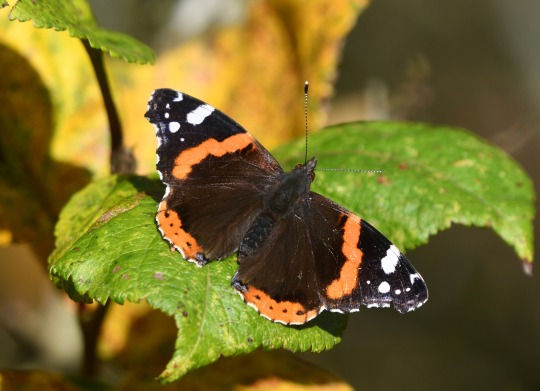

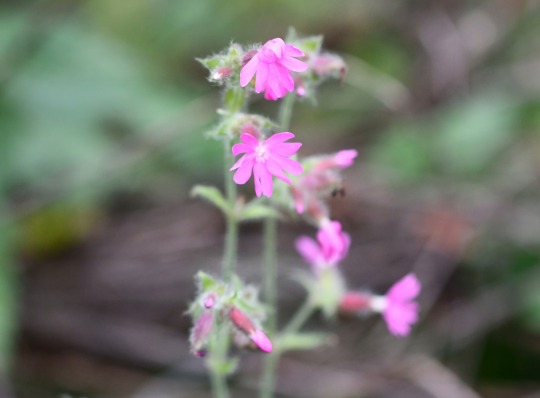
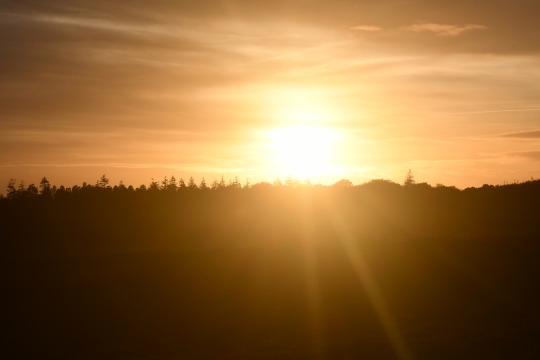
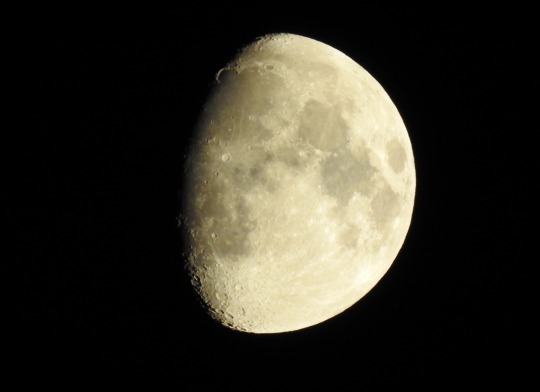
Eleven of my favourite photos I took in November 2024 and month summary
The photos are of; Great White Egret at Testwood Lakes, Snow Bunting at Sandy Point on Hayling Island, Cormorant at Lakeside Country Park, white deadnettle and view at Lakeside, Fallow Deer at Bolderwood in the New Forest, Red Admiral and shaggy scalycaps at Lakeside, red campion at Testwood Lakes, a characteristic sun going down whilst out view at this time of year at Pig Bush in the New Forest and the moon out the front.
November was another fantastic month of birds for me with a major highlight coming soon into it getting sensational views of the sumptuous Snow Bunting at Sandy Point and another fine species seen late on with only my third ever Red-necked Grebe seen at Weston Shore today. Other key birds seen this month included the seasonal delight of Redwings, Raven, Green Woodpecker, Ring-necked Parakeet, Greenfinch and Siskin. Glorious Great White Egret views, Grey Heron, Little Egret, Lapwing, Oystercatcher, Curlew, Wigeon, Teal, Shoveler, Pochard, Red-crested Pochard, Goosander and Egyptian, Greylag and Brent Geese brought a sprinkling of blissful wading birds and waterfowl to observe, evocative of autumn and winter for me. This month I also enjoyed seeing Buzzard, Red Kite, Jays, Kingfisher including at Winnall Moors and Lakeside in another strong month I had for them, Cormorant, Great Northern Diver, Slavonian Grebe, Mistle Thrush, Blackbirds, Robin, Great Tit, Blue Tit, Long-tailed Tit, Wren, Pied Wagtail and Tufted Ducks and Mute Swans which were especially nice to see on patch at Lakeside and a young one in Winchester respectively. Common Gull was another key bird seen this month with one returning to Lakeside which is always thrilling to see, with Herring Gulls enjoyed there too. I also took pleasure in some great Winchester Peregrine and Grey Wagtail and Lakeside Great Crested Grebe, Coot and Moorhen views this month. A dashing male Sparrowhawk at home was another special bird to see.
I got fine and immersive views of Fallow and Roe Deer this month, seeing a fair few New Forest Ponies, Grey Seal, Grey Squirrels and Brown Rats too. There was still some butterfly interest this month with some great views of a Red Admiral at Lakeside. Bee, wasp and hoverfly including marmalade hoverfly were also nice to see with Grey Silverfish and spiders seen well at home. It was a good month for plants still with a fair bit seen flowering including knapweed, marsh thistle, red campion, herb-Robert, hedgerow crane’s-bill, periwinkle, hedge woundwort, red clover, some early winter heliotrope and violet at and near Lakeside, hogweed, wild carrot, ragwort, petty spurge, dock, white deadnettle, stinging nettle, red deadnettle, groundsel, ivy-leaved toadflax, viper’s-bugloss, scentless mayweed, sea mayweed, oxeye daisy, daisy, dandelion, oxtongue, sow thistle, buttercups, ivy, rock samphire, red valerian, evening primrose, gorse, common heather, bell heather and cross-leaved heath. I enjoyed observing seed heads a lot this month with teasel, fleabane, spear and creeping thistle, wild carrot, hogweed, old man’s beard, purple loosestrife and hemp agrimony standing out and leaves including common toadflax, thistle and ferns. Apple, privet berries, rose hips and holly berries led the way for fruit seen.
Fungi once again played a key role in my month as I was captivated by enigmatic shaggy scalycaps and intricate patterns of turkey tail at Lakeside with the latter seen elsewhere too. Crowded parchment, waxcaps, dung-loving deconica, possible winter russula, pleated inkcap, earthball and parasol in a good autumn I’ve had for them and a notable new one for me seen a couple of times in the New Forest handsome club were other highlights. I also liked seeing moss and lichen including oakmoss. I took in a lot of charming landscape and sky scenes this month again with the splendour of autumnal colour continuing to grip the landscape giving way to morning frost scenes as winter crept in towards the end. Sunsets, sunrises and some great full moon scenes were wonderful to take in this month too alongside lake, wetland, coastal and New Forest woodland and heath vistas. Wishing you all a great December.
#november#snow bunting#cormorant#great white egret#kingfisher#red admiral#shaggy scalycap#new forest#hayling island#hampshire#lakeside country park#eastleigh#winnall moors#testwood lakes#winchester#white deadnettle#red campion#europe#england#uk#earth#nature#reflections#photography#walking#birdwatching#moon#sunset#home
8 notes
·
View notes
Text








18/09/2024-Moon this morning and evening and phone photo of a rose by the Weirs at the River Itchen in Winchester at lunch time and mushroom and Red Squirrel on Brownsea Island last Wednesday, view at Andrew's Mare in the New Forest on Saturday and Bald Eagle at the Hawk Conservancy last Thursday.
Mute Swan, Mallards, Moorhen, red bartsia seed heads, ivy, ivy-leaved toadflax, hedgerow crane's-bill and Silver Y moth seen in Winchester were other highlights today.
#red squirrel#bald eagle#brownsea island#hawk conservancy trust#views#andrews mare#new forest#rose#the weirs#winchester#moon#harvest moon#2024#outdoors#england#uk#earth#nature#europe
2 notes
·
View notes
Text



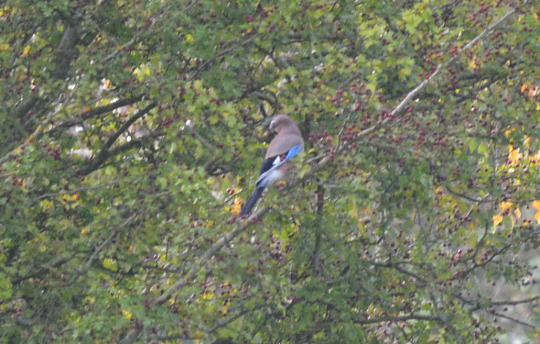

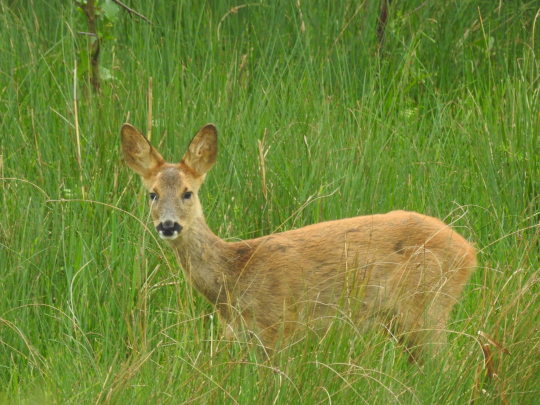

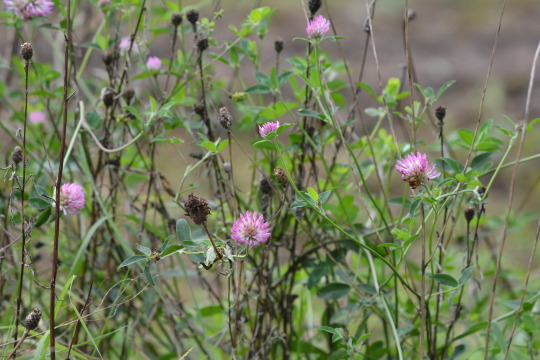
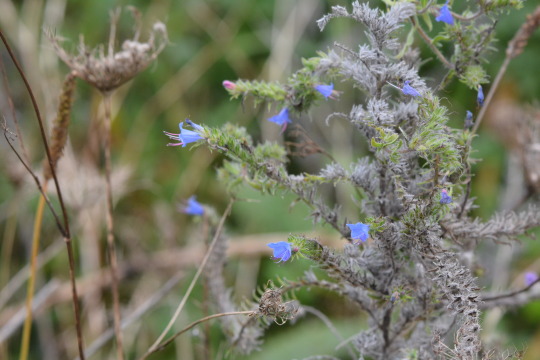

16th October 2023: Lakeside and home
Flora and fauna pictures taken in this set: 1. Some stunning common toadflax just outside the park on the pavement to the east, a favourite flower of mine in bright clumps currently that I've enjoyed here throughout the year it was nice to have a chance to get photos with my DSLR and macro lens today. 2. A mesmerising Mistle Thrush, one of a few I saw. They're birds I find so sweet to see, they're dashing and powerful. 3. A Lesser Redpoll, one of six I was euphoric to spot in the birches at the east of the southern fenced off area and I saw them flying around a bit, gleeful moments spent in awe of these mini finches. Interestingly like Mistle Thrush was on New Year's Day, Lesser Redpoll was a patch tick for me in March here so it was brilliant to get these into another autumn/winter here birds I love seeing. There were around six Mistle Thrushes I saw all together so these two species were intertwined today. 4. A record shot of a Jay. I was amazed enough as it is to get wonderful views of this one of my favourite birds and crows again here today and get a photo, and it adds yet another great little trend to my phenomenal year of wildlife that I've now photographed all eight British crow species this year. I like my corvids and it's a unique point of this year that like 2019 I had the chance and was able to see them all so to get the pictures is nice. 5. A delightful scene of a bee on purple teasel. 6. A gorgeous Roe Deer I was privileged to watch in the northern fenced off area both from the northern path and the central path between the fenced off areas. It's always magical to see these mammals which I've had a top year for, especially here. Not long after 3pm in the afternoon not when I'm often here it was peaceful which meant it was more bold perhaps. 7. Mallard. 8. Broad-leaved clover. 9. Viper's-bugloss another flower I love. 10. Another key bird today, Carrion Crow.
On a day off today it was fantastic to get out to Lakeside twice a two hour walk around and then about an hour one later, and it amazed me as it always does the differences in the list of things seen to Saturday when I also did a longer walk round here to the lunch time and evening ones, showing that no two days are the same. Great Spotted Woodpecker and Green Woodpecker (I can't have seen both of these and Jay a fellow flamboyant favourite of mine on one day at Lakeside much/ever before, or many places) were other standout birds. I also enjoyed seeing Buzzards again, Kestrel really well near the entrance at the start of the first walk, my first Wren seen for a little bit, Dunnock, Goldfinches, Chaffinch again, Great Tit, Jackdaw, Magpie, House Sparrow, Starling, possibly a Redwing, Great Crested Grebe, Greylag Geese, Moorhen including a growing youngster, Coot as well as Grey Squirrels seen nicely they're around in numbers here lately, Red Admiral and Common Darter. Goldfinches and Collared Doves were joyous birds seen at home today. Knapweed, hedgerow and meadow crane's-bill, common mallow near the common toadflax, white clover, white deadnettle, hogweed, old man's beard, oxeye daisy, chamomile, bramble flower, cleavers, marjoram, dock on the green out the front and in Lakeside, rose hips, hawthorn, firethorn and privet berries and apples were other good plants/fruit seen.
#photography#birdwatching#jay#chaffinch#mistle thrush#lesser redpoll#goldfinch#finch#thrushes#finches#2023#outdoors#lakeside#lakeside country park#eastleigh#england#uk#earth#nature#monday#monday motivation#hogweed#common toadflax#common mallow#red admiral#common darter#grey squirrel#colourful#colours#europe
8 notes
·
View notes
Text


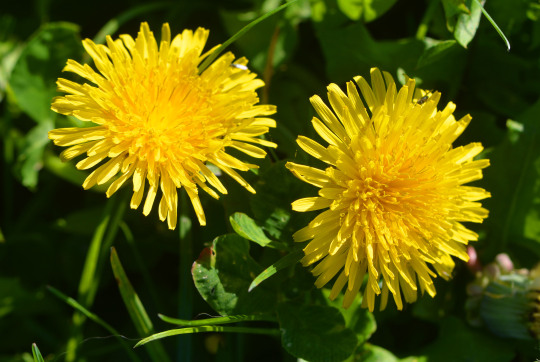
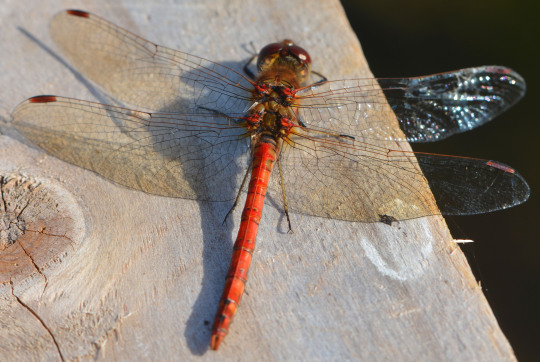

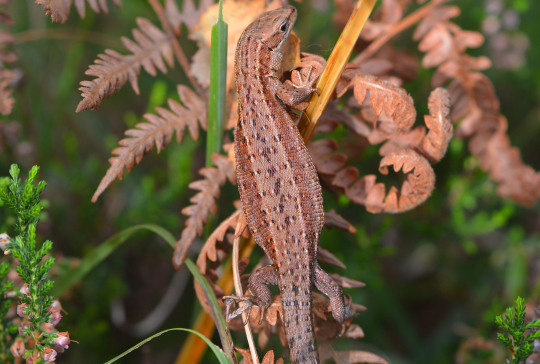

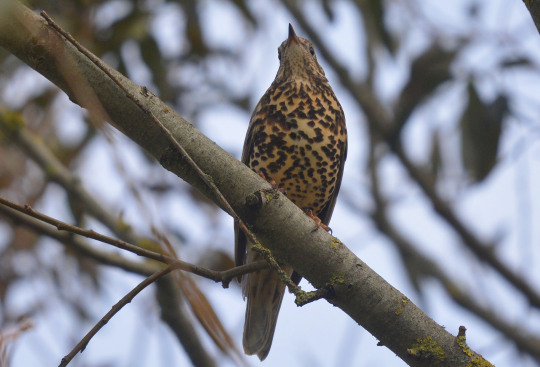
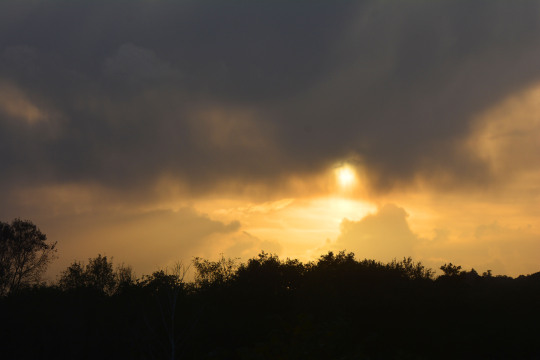

Ten of my favourite photos I took in October 2023 and month summary
The photos are of; fly agaric at Bolton's Bench in the New Forest, mushrooms at Pig Bush in the New Forest, dandelions out the front, Common Darter at Winnall Moors, Clouded Yellow out the front, Common Lizard at Bolderwood in the New Forest, New Forest Ponies at Leaden Hall, Mistle Thrush at Lakeside Country Park, a sky scene at Lakeside and autumn leaves in Winchester.
October seemed to fly by and it was a brilliant month of wildlife watching and taking photos again for me. It was a real surge into autumn with the vibrant, colourful and nourishing scenes as the coloured leaves put on their showstopping display, the flamboyant and fascinating mushrooms of fungi dominated and the rich golden angles of sunlight enchanted the month. Fungi was a key point of my October, as I was fortunate to see some of the key species of my year ones I always strive to see including fly agaric, amethyst deceiver, shaggy ink cap, common ink cap, pleated ink cap, yellow stagshorn, sulphur tuft, shaggy scalycap, parasol, poronia punctata (nail fungus) and turkey tail. Common puffball and the revelation of my autumn common earthball as well as a new one for me bleeding fairy helmet were other highlights of the many seen this month. For flowers the year naturally slowed down a bit, but species such as devil's bit scabious, daisy, oxeye daisy, Michaelmas daisy, dandelion, oxtongue one I loved delving into more this month, common toadflax, broad-leaved clover, white clover, white deadnettle, flowering gorse, bits of heather still in flower, hedgerow crane's-bill and tormentil brought beautiful colour to my walks still. As did rose hips, hawthorn and particularly holly berries this month as perhaps my best ever season for enjoying fruit continued. The colour of berry laden bushes and autumnal flair presented many fantastic opportunities to take in and photograph landscapes this month, with some gorgeous locations visited including lots in the New Forest which comes alive in autumn. From ever earlier sun setting and some sun rising scenes to the moon and rainbows in changeable weather it's been a top sky month for me too.
It was a fabulous insect month still with including in bits of unseasonably warm and sunny weather the Clouded Yellow being joined by one of the stars of the year Red Admiral with many seen again this month, Speckled Wood, Peacock, Brimstone and Small Copper with a pleasing amount of butterflies still about with a moth or two too which has been a key theme this month. Common Darter, Southern Hawker and Migrant Hawker continued to be very frequent sights for me this month having amazing experiences watching them, particularly at Winnall Moors and Lakeside. The Common Lizard alongside ladybirds and many spiders especially Long-bodied Cellar spiders with a fair few seen at home were highlights in other areas.
Onto birds and I had a brilliant month of thrushes, most excitingly witnessing the anticipated return of the Redwings at Lakeside and in the New Forest, a stalwart of the months ahead. The Mistle Thrush at Lakeside a key sighting this month, and away from thrushes there the Lesser Redpolls of the same day, Goldfinch, Cormorant, Buzzard, lots of Coots, the Ring-necked Parakeets, Long-tailed Tits enjoyed many times, Mute Swans, Jay enjoyed so many time another really key species of autumn and multiple Great Spotted Woodpecker and some Green Woodpecker views were other Lakeside highlights. Sparrowhawk, a wonderful couple of New Forest Woodlark sightings and Marsh Tit were other standouts this month. Finally onto mammals and alongside many great New Forest ponies and Fallow Deer encounters either seeing them or hearing the males bellow in the forest the big thing this month was seeing pigs out for pannage at Pig Bush and on journeys, the always surreal and marvelous site at this time of year as the New Forest commoner's turn out the pigs to gorge on the (harmful to ponies) acorns. Grey Squirrels and a magical Roe Deer encounter at Lakeside also stood out. Have a good November all.
#photography#birdwatching#october#2023#butterflies#common darter#red admiral#clouded yellow#brimstone#common lizard#long-bodied cellar spider#oxtongue#dandelion#fly agaric#fungi#amethyst deceiver#migrant hawker#dragonflies#reptiles#birds#mammals#pannage#pigs#fallow deer#new forest pony#woodlark#happy#outdoors#walking#walk
13 notes
·
View notes
Text

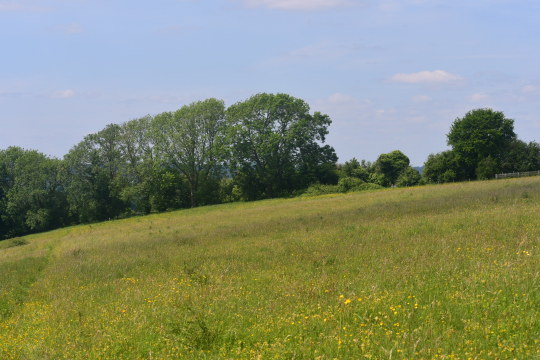

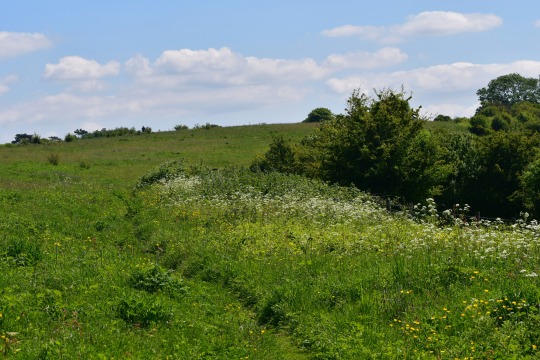
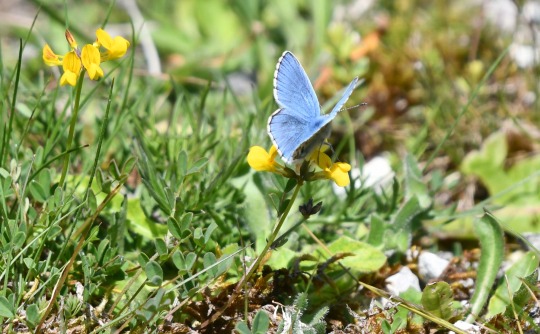
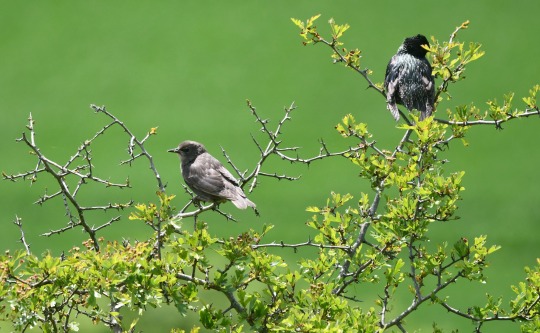
Speedwell, views, Marsh Fritillary, my first electric Adonis Blue of the year one of my favourite butterflies and Starling and young on another look at Magdalen Hill 25/05/2024.
Kestrels mobbing Red Kite which was memorable to see, Yellowhammer, Whitethroat, Buzzard, Brimstone, Dingy Skipper, lots of Small Heaths, Small Blue, Swollen-thighed beetle, Garden Chafer beetle, my first Common Carpet moth, hedgerow crane's-bill and horseshoe vetch of the year, Broad-bodied Chaser, sainfoin, herb-Robert and young Goldfinches and House Sparrow enjoyed at home were other highlights today.
#adonis blue#starling#marsh fritillary#whitethroat#buzzard#red kite#kestrel#dingy skipper#small blue#birdwatching#butterflies#2024#bank holiday#may#magdalen hill down#magdalen hill#winchester#hampshire#england#uk#world#earth#europe
4 notes
·
View notes
Text
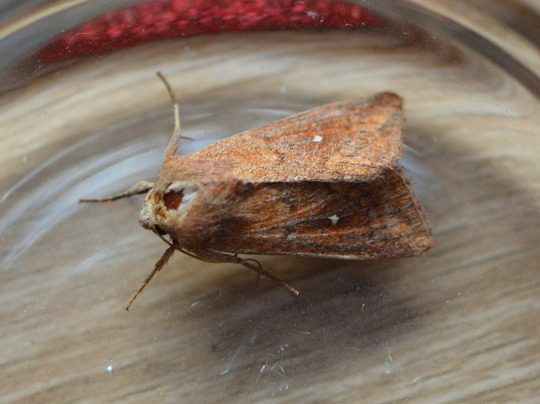
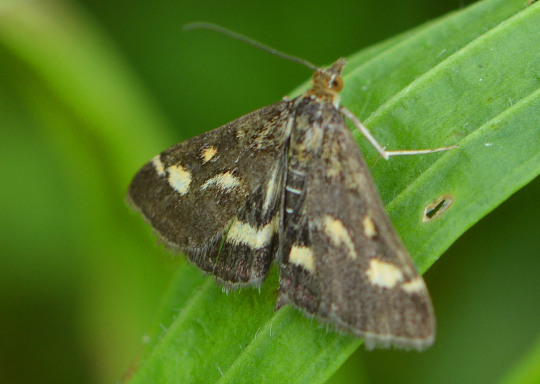
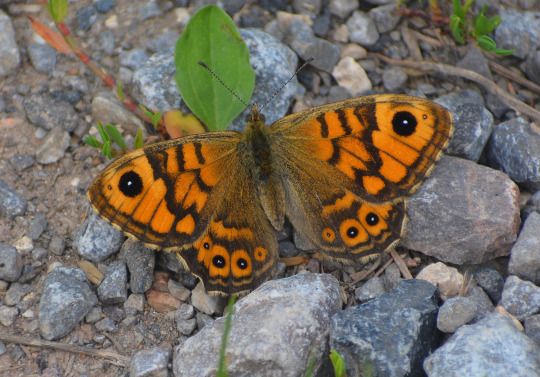
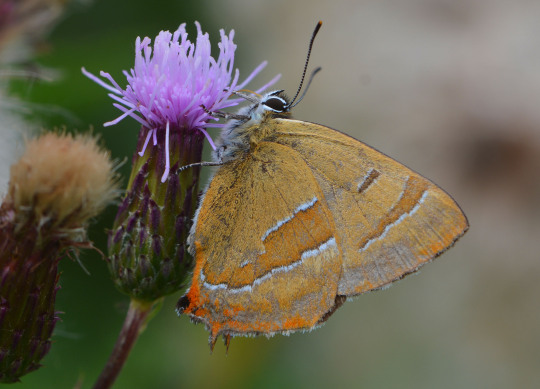
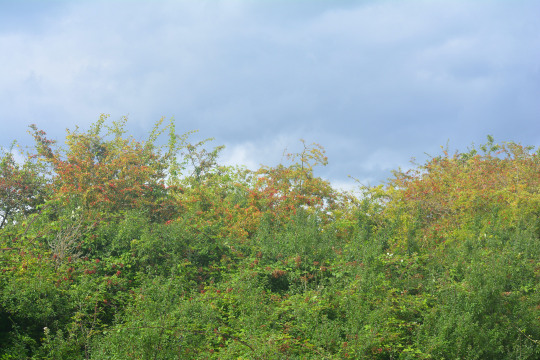

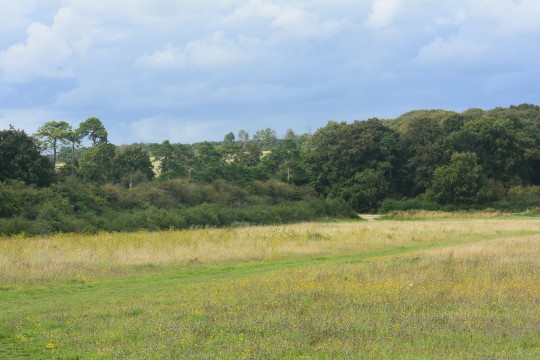
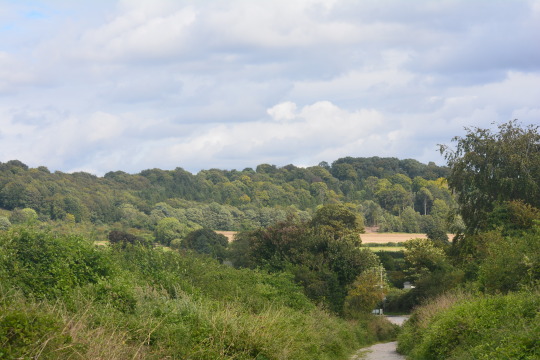

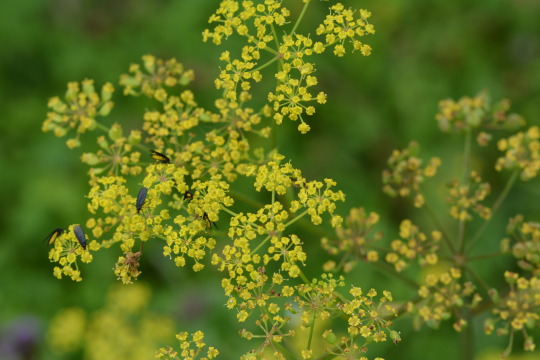
13/08/2023-Shipton Bellinger and home
Photos taken in this set are of: 1. The White-point moth, another lovely moth to see at home this morning. 2. Common crimson-and-gold moth at Shipton Bellinger, an eyecatching species to see joining in a great surge in moth sightings for me especially this weekend. 3. Wall Brown, it was an honour to get to see these vibrant and energetic butterflies so well again after seeing our first of the year here two weeks ago. Today was one of our best ever days for seeing them with a fair few seen and top quality intimate views of them with wings open and closed they were widespread around here. It's funny to think I was worried as to if we'd see one this year after missing them at the coast where we often see them, this place is certainly a gem it's been a revelation for them, we first came here for Brown Hairstreak but Wall Brown is an important one here too. Unusually for Wall Brown I got great close up chances for photos today and it's a novelty seeing a species I mostly have at the coast inland, so even though this is one of the first butterflies I (retrospectively from a photo) ever identified early in butterfly days there feels something pleasingly fresh about seeing them here. 4. A Brown Hairstreak it was an honour to see again today, I spent some glee filled moments with this astonishing and angelic butterfly, what an honour to see them. I hadn't seen one of these until 2021 so there is a great freshness with these for me too and I feel very lucky to have had two visits here seeing these beautiful butterflies this year. 5, 7 and 8. Views at Shipton Bellinger. 6. One of a few bees I enjoyed caked in pollen on the bold woolly thistle flowers. 9. Some hawthorn berries on a tree. 10. Wild parsnip one I enjoyed a lot today, with interesting flies on.
At Shipton Bellinger it was also good to see Holly and Common Blue, Gatekeepers, Small Heath, Green-veined White, Speckled Wood, Peacock, ermine moth I believe Spindle ermine, ladybird, Common Red Soldier beetle, prominent mossy rose galls which I'm enjoying appearing of late, beautiful Roesel's bush cricket and my first ever Lesser Hornet hoverfly which is gorgeous. Magpie, Carrion Crow, Woodpigeon, Great Tit and Blue Tit were nice to see too, with Collared Dove which I took a picture of somewhat photobombed by a flying House Sparrow which was interesting, Goldfinch including young and seen well and intimately in the garden whilst I had my hair cut there Starlings seeing House Sparrows in the buddleia then also home bird highlights today. My first Morning-glory Plume moth of the year was also nice to see at home with four-leaved pink sorrel and other flowers enjoyed in the garden. Other highlights of the many flowers enjoyed at Shipton Bellinger were my first soapwort and goldenrod of the year, some more mugwort this week, viper's-bugloss, eyebright, red bartsia, rosebay willowherb, centaury, common toadflax, loads of wild basil again, knapweed, scabious, herb-Robert, hedgerow crane's-bill and melilot. Another brilliant wild weekend.
#brown hairstreak#wall brown#speckled wood#peacock#common blue#birdwatching#butterflies#uk#earth#nature#happy#moths#outdoors#summer#august#hampshire#shipton bellinger#the white point#collared dove#common crimson-and-gold moth#world#walk#walking#weekend#2023#home#europe
2 notes
·
View notes
Text
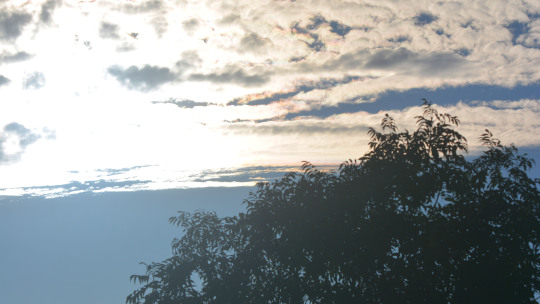

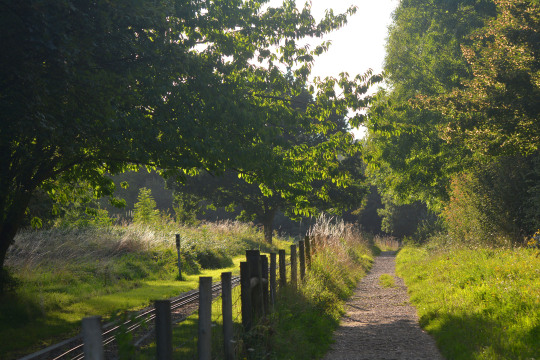
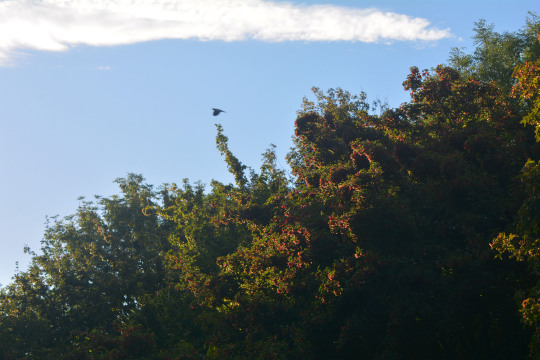
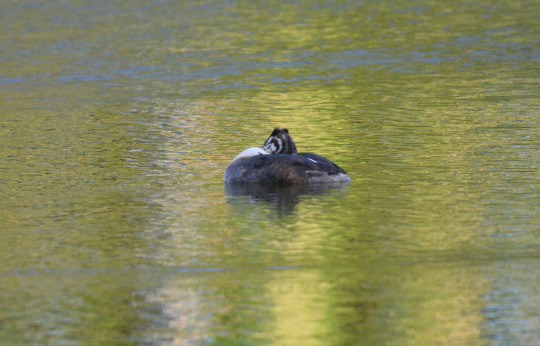

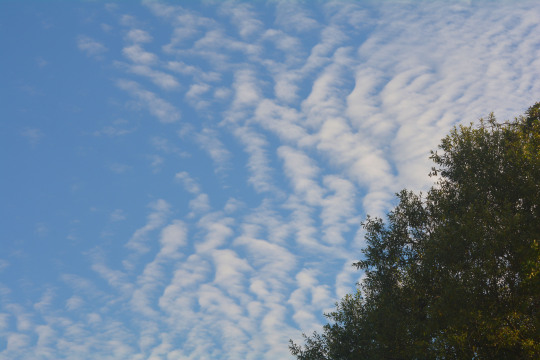
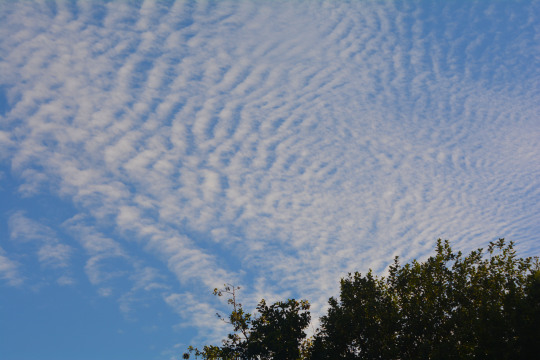


21/08/2023-Evening walk at Lakeside, Winchester and home
Photos taken in this set: 1-4, 6-8 and 10. Views on an evening walk at Lakeside. It was so refreshing and powerful to be out in the enriching evening sunlight, feeling strong outdoors summer evening vibes. There were breathtaking scenes as the sun kissed the lakes creating lovely reflections and permeated through trees. On recent later evening walks I have reflected on how the lowering sun at that time of day recreates the scenery somewhat, I see views I observe often in a new way which is lovely. The wavy clouds in the sky was notable at home and Lakeside this evening too. 5. Great Crested Grebe, it was lovely to see these this evening. 9. Steeplebush looking glorious in the evening light with one bright pink flower.
Also of note at Lakeside was one Coot, the first I've seen here for months. Moorhen, Black-headed Gull and Woodpigeon were good to see too, with a stunning Speckled Wood view when cutting across Lakeside on my commute tonight. I possibly saw a Hornet Mimic hoverfly or Lesser Hornet hoverfly at Lakeside. Blackberries, acorns and sloes as well as red bartsia and bird's-foot trefoil kissed by the evening light, pineappleweed, water mint, great willowherb, purple loosestrife, dock, seas of ragwort, white clover and prominent broad-leaved clover were lovely plants seen at Lakeside this evening with hedgerow crane's-bill and another crane's-bill seen well as well as the masses of ragwort this morning. On an office working day in Winchester today I enjoyed glorious views of Winnie the Peregrine at the cathedral, a stunning bird I always find it mesmerising and surreal to see. It was also good to see gypsywort in Abbey Gardens one I've seen a lot of recently, hydrangea, cinquefoil and ivy-leaved toadflax at the Peninsula Barracks walking through on a lovely evening.
#photography#england#uk#earth#nature#birdwatching#happy#flowers#birds#great crested grebe#coot#pineappleweed#walking#walk#evening#lakeside#lakeside country park#winchester#winchester cathedral#world#outdoors#2023#insects#flower#speckled wood#butterfly#europe#ivy-leaved toadflax#sun#sunshine
1 note
·
View note
Photo


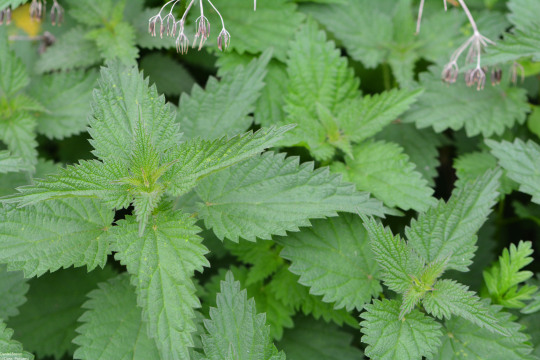



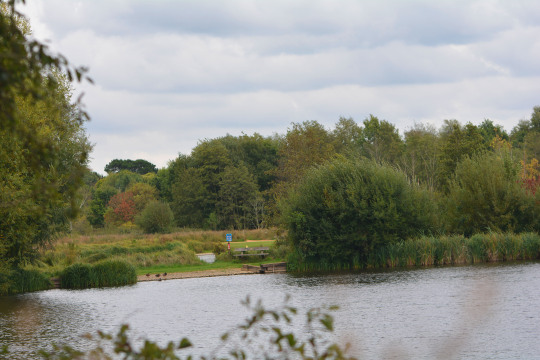


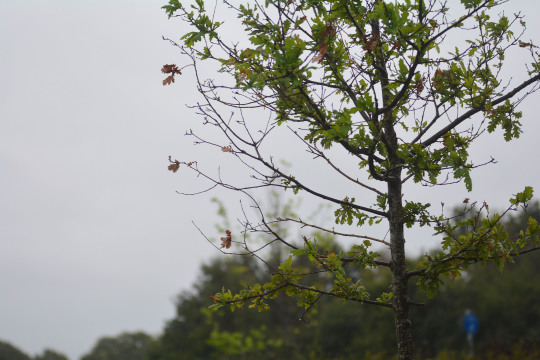
30/09/2022-Lakeside and home
I have seen something of an increase in flower photos this week. I am not sure if this is because I have been a bit more efficient with taking photos generally this year than last year and what it became in 2020, and a big part of that was for many flower species after I’d taken a few shots of them on different days in different ways I was conscious not to take many of that species unless there was a moment for a photo I just could not miss to allow myself to photograph other species, thinking of the bigger picture of the days and weeks all being linked and it all counting together. And it did have a good impact for me as with me knowing more and more flowers since I first really got into them in 2020 and noticing more of me appreciating being out with flowers and plants and not always needing to try for photos. So now the season is on the turn into autumn so there are less flowers naturally, but a few are emerging again after the relief in the weather following the heatwaves they now maybe stand out quite a bit. I enjoyed photographing some wood avens with their delicate silky yellow leaves some flowering I noticed on Tuesday by the railway track at Lakeside, the hedgerow crane’s-bill in the fourth picture in this photoset a first for me for the species I believe a smashing and colourful one to see which I noticed on Wednesday when passing the grassy area at the entrance to Lakeside on my commute repeating a trick I did a lot in the late winter/spring of noticing flowers just inside Lakeside at the entrance commuting and then went to take a photo on a lunch time walk another day, some mallow in the sixth picture in this photoset, some possible hogweed and a daisy on the green out the front on the way back on my lunch time walk. I took the third picture in this photoset of some nettle leaves which I enjoyed today.
Other flowers I enjoyed seeing at Lakeside or nearby on walks today were carrot and a yellow quartet of bird’s-foot trefoil, agrimony, dandelion and ragwort, with some fuchsia and other colourful flowers seen well at the cafe’. I also enjoyed seeing steeplebush, lovely blue flowers on the balcony and pink flowers out the back at home today and smashing yellow flowers in the flower bed out the front on the way to Lakeside that have sprung up alongside the cornflowers, yarrow and poppies one of which I took the first picture in this photoset of.
I was delighted to see a lovely little moth fly into vegetation at the south of Lakeside which I took the fifth picture in this photoset of, its The Snout an exciting one to see. Its my seventy second moth species I’ve ever seen and milestone fortieth species seen this year I have had such a good year of seeing moths.
Seeing and hearing Carrion Crows well at Lakeside at lunch time, and Magpie well on both walks were nice moody corvid moments at Lakeside today. A young gull either Herring Gull or Lesser Black-backed Gull splashing and flying up into the air then back down into the water and the Great Crested Grebe preening were highlights on Concorde lake on my lunch time Lakeside walk. With great views of Coot and Moorhen on this lake too. A Robin in a puddle on a wet Lakeside evening walk along the northern path I really liked seeing one in the garden today also always a treat with young and adult Woodpigeon on the railway track were nice to see. I heard tit species I believe nicely at Lakeside at lunch time too and I heard a Ring-necked Parakeet calling briefly from within trees. I liked seeing and hearing hoards of Starlings gathering and feeding out the back throughout today.
There was a definite autumnal feel about today. The broad trees surrounding Concorde lake that were endless emerald bastions of summer in the months gone by now yellowing as part of a fair few colours on trees seen here, fallen leaves scattered across path and lake and welly boots needed for a part of the path where mud collects which I saw had arrived last week and I planned to walk that part today. Added to a its fair to say rare wet version of my peaceful Lakeside Friday evening walk to take me into the weekend gently which was moody, and there was something cozy about seeing the day fade out with the rain falling and the gloom. I took the second, seventh, eighth, ninth and tenth pictures in this photoset of views at Lakeside today the eighth showing some fallen leaves on the northern path with great bits of green to enjoy still. I hope you all have a nice weekend.
Wildlife Sightings Summary: My first ever The Snout moth, one of my favourite birds the Great Crested Grebe, Mallard, Moorhen, Coot, Herring or Lesser Black-backed Gull, Black-headed Gull, Woodpigeon seen well at Lakeside and home, Starling, Goldfinch, Robin, House Sparrow, Carrion Crow, Magpie, Jackdaw and I heard Ring-necked Parakeet.
#autumn#autumnal#photography#photos#birding#birdwatching#birds#autumn leaves#leaves#uk#nature#woodpigeon#great crested grebe#mallard#moorhen#coot#gull#black-headed gull#robin#carrion crow#magpie#jackdaw#ring-necked parakeet#the snout#snout#snout moth#wood avens#bird's-foot trefoil#mallow#carrot
0 notes